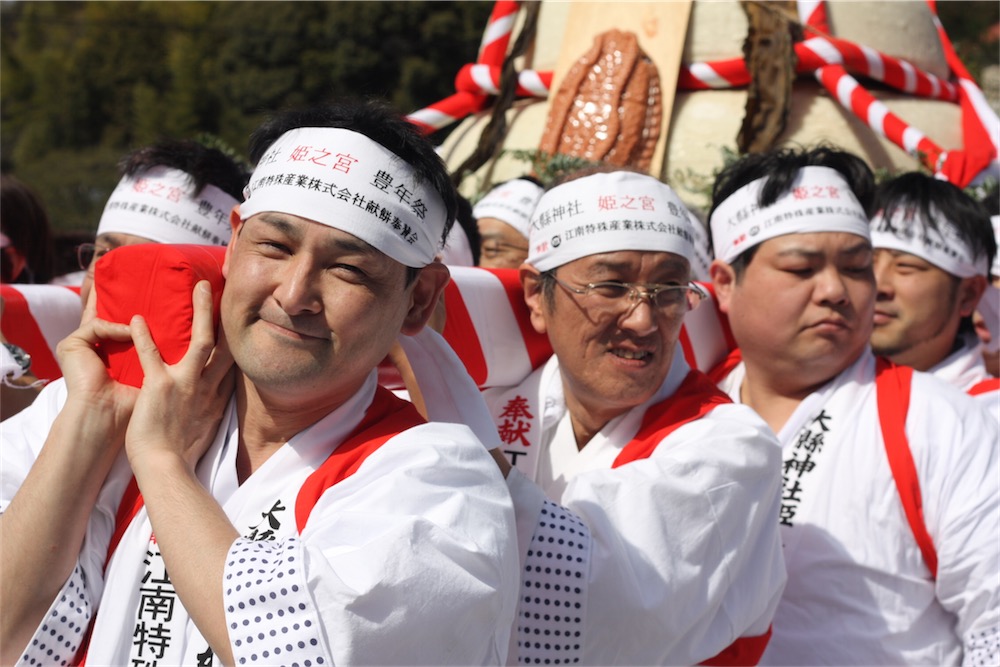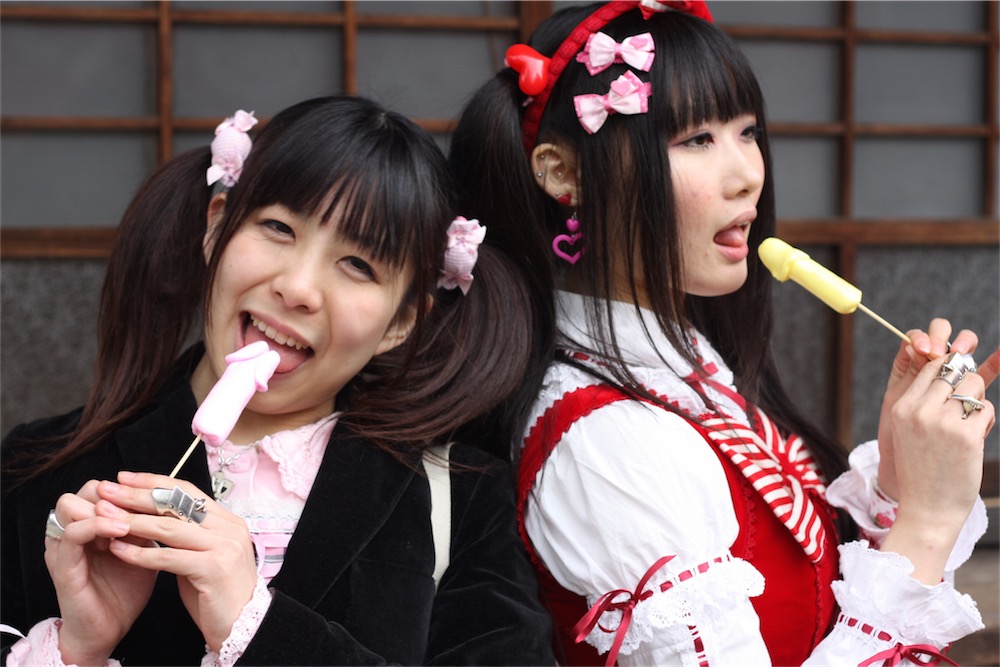NAGOYA ON SPEC – THE JAZZ-PLAYING ROBOT – “NOTHING SAYS SPRINGTIME LIKE A PENIS FESTIVAL” – SCHOOLED BY THE READERS
To explain why I loved journalism and why I left it, I often tell the story that follows.
It was 2010 and I was on a reporting trip to Japan. I had been filing stories from Taipei for several years and was eager to break out of what one editor called the “Taiwan ghetto.” Don’t get pigeon-holed as “Taiwan guy,” he had warned. Your career will stall out if you stay there too long. Move around, write about different places, make a name instead as “East Asia guy.”
I was acting on his advice, and on my own journalistic claustrophobia. I’d flown to Japan, which meant I was likely to lose money. But I didn’t care. I desperately needed some bylines that weren’t from Taipei.
Besides, Japan was cool. In my teens I’d lived through America’s 1980s fixation on the Land of the Rising Sun – the ninja craze, complete with throwing stars (eventually banned at my junior high school), the controversy over the flood of imported Japanese cars. The country loomed large in my imagination and I had long wanted to visit.
Organizing the trip was an ordeal. I didn’t speak any Japanese and had no “fixer” to help me. Journalist friends who had lived in Japan had urged me to avoid the clichés of foreign reporting on Japan: stories about vending machines selling used women’s panties, or the latest marginal youth fad. Such subjects were all too often dressed up as another “those wacky Japanese” story for an American audience.
No, I was there to do serious journalism. I did time-consuming and careful research on Japanese auto companies’ experiments with hydrogen-powered cars, and on Japan’s plans to expand nuclear power and reprocess spent nuclear fuel. (This was a year before the Fukushima disaster.)
I also did extensive background research on Japanese companies’ increasing use of temporary workers. The once lifetime contract between Japan Inc. and its employees was fraying. As a former temporary worker in Washington, D.C., San Francisco, and New York City, I had a special interest in this story. Big business was squeezing employees’ wages and standard of living to increase profit margins. My temp agencies had routinely taken up to 25 percent of what they billed the company, merely for their often incompetent “coordinating role” – and administering a typing test.
Temping had been a means to an end for me in my freewheeling twenties. One of my friends had called it “mutual exploitation.” But the trend had far more serious consequences for those with families to feed and no upward mobility. And it upended all the old tropes I’d heard in the 1980s about Japanese companies operating as a big paternalistic family, with long-term, mutual commitment.
So I sent e-mail. I made cold-calls. Finally I enlisted the help of a British guy who had taught English and then volunteered for local labor unions in Nagoya. My research and interviews became a four-part series called “Temp Japan.” I thought it was one my most solid journalism products yet. When it was published, I awaited the accolades from readers and editors, and anticipated the awards nominations. Perhaps I would even spark an outpouring from Japanese temp workers – a “thank you for telling our story” type of response.
But I have to back up. I had arrived in Japan early and had time to kill before my interviews. So I spent several days sightseeing.
I discovered a Santa Claus-themed “love motel” in an entertainment district in Osaka, but declined to write about it. “Don’t perpetuate ‘weird Japan’ stereotypes,” said the nagging voice in my head. On I went to Nagoya, where the latest fashion seemed to be women sporting lingerie as street-wear. Not going to write about that either, I thought.
I jogged daily under an elevated highway, through a concrete maze of ramps, stairs, and pedestrian walkways. I tried to avoid the eccentric characters wandering naked into the common bathroom at my bare-bones hostel. My room boasted a tatami mat, some pillows, and a coin-operated TV set. I wandered through the incredible Toyoda museum, tracking the Toyoda family business from its early days in textiles to today’s sprawling auto empire (the family tweaked the name of their auto company to “Toyota” in the 1930s). At the museum’s exit lobby I sat for far too long listening to a Toyota robot play jazz standards on a trumpet.
Maybe it was the robot’s rendition of “Moon River.” But I began to sink into that “stranger in a strange land” melancholy captured so well in the film Lost in Translation. Playing my best Bill Murray, I even befriended a bartender at a local watering hole who introduced me to some fine single-malt whiskeys.
Thumbing through Lonely Planet: Japan for other day-destroying ideas, I discovered that a fertility festival was about to be held. Even better, two fertility festivals – one celebrating female genitalia and one celebrating male genitalia – were taking place on successive days. A perfect chance to try out my new digital camera, I thought.
The festivals originated from folk rituals going back at least 1,500 years, into Japan’s agricultural past. They’re held to ensure a good harvest and promote baby-making.
The fertility festivals haven’t done much on the demographic front, though. Japan still has one of the lowest birth rates in the world, at 1.43 children per woman in 2013. But the festivals provide an economic shot in the arm for host cities, a party for foreign tourists and expats, and a chance for locals to let loose too.
One of the best-known phallus festivals is held every March 15 at Komaki City’s Tagata shrine, about forty-five minutes outside Nagoya. In a neighboring village, a vagina festival is held the Sunday before. The year I visited, that was the March 14 – meaning forty-eight hours of non-stop genital worship.
I took the morning train from Nagoya and walked up to the shrine area. At the Hime-no-miya Grand Vagina Festival, parents dress up their kids in cute outfits, pray for healthy babies, and celebrate with sake, beer, and snacks. In the morning, children carried a small labia to the Ogata shrine. Later, a team of grown men carried a far larger labia to the same destination, straining under the weight of a huge wooden platform. They were followed by two smaller labia litters. At the end of the day festival participants threw pink and white mochi (glutinous rice balls), symbolizing female genitalia, into the crowd of spectators.
Japanese fertility rite participants carry a labia on a palanquin
The penis festival the following day drew far more foreign and Japanese tourists – some one hundred thousand, according to a festival brochure. While Vagina Day was a mostly Japanese affair, word of Phallus Day had evidently spread far and wide.
Festival foreplay included a lot of posing with wooden and candy penises. The main event, though, was the parading of a six-and-a-half foot long phallus carved from Japanese cypress. Teams of men heaved the giant member down the road, stopping to spin it around a few times amid yelling, cheering, and jostling. The work was so hard that teams rotated during the one-and-a-half hour procession.
The phallus parade is rooted, said the festival brochure, in “an ancient Japanese belief that for the growth and development of all things, the mother, Earth, has to be impregnated by the father, Heaven.” “People come here when they want to have a baby,” said festival volunteer and Komaki resident Katsuragawa Noboru. “If it works, they have to come back the next year to thank the gods.” It worked for Katsuragawa, twice: He has a son and a daughter now, he said with a laugh.
Lucy Glasspool, who was then researching gender and pop culture as a visiting scholar in Nagoya, was helping out at the information booth. It was her first penis festival. “I heard about this a long time ago and I’m not sure I believed it,” she said. “But now I’m here and it’s everything I thought it would be. I highly recommend the penis-shaped candy.”
Using a loudspeaker, she gave English-language updates on the penis’ progress, and passed out detailed information in English on the history and significance of the rite. But most Western tourists seemed happy just to get drunk and make endless penis jokes.
Vendors sold penis- and vagina-shaped candies and chocolate-covered bananas, wood penis sculptures, and penis earrings. I wandered the crowd, snapping pictures and eavesdropping on titillated Americans. “We just found an ashtray in the shape of a vagina that you just need to buy,” said an older woman with a southern twang, into her cell phone. As the phallus approached, one female expat complained loudly, “It’s smaller than last year’s.” Another American woman, reviewing a photo of her friends posing with oversized wooden penises, said, “Oh my God. This one is so going on Facebook.”
I took several photos of some Japanese girls and their male American friend sucking on penis candies. Trained to avoid potential lawsuits, I alerted them to the possibility that photos of them fellating a candy phallus might end up on the Internet (they did). The girls didn’t mind. As I was leaving, one of them called out to me.
“Have a nice dick,” she said.
Japanese girls enjoy penis candies at the phallus festival
I took my camera’s memory card and my notebooks back to Taipei, and dutifully filed my massive labor series and my phallus festival story. In the days that followed I waited for the reaction.
The penis festival story caused a sensation. Thanks to the provocative headline and photos, it quickly notched up over ten thousand shares on Facebook. It spread virally to a host of hip websites. My editors were ecstatic. They gave me a large bonus, enough for me to break even on the Japan trip. From across the Pacific, I got virtual “high-fives” from my American colleagues. More stuff like this, they said. Give us more penis stories.
I’m still not sure anyone read the Japanese labor series. At any rate there was zero response. At first that depressed me. I had put a lot of time into researching, preparing, and writing about labor issues, determined to create a piece of “serious journalism.” Due to weeks of preparation and the British guy’s connections with Japanese unions, I had gripping stories of real lives being affected by dramatically changing labor trends in what was then the world’s second-largest economy. What was going on?
But then I began to understand. It was pretty simple, really. The Japanese labor series was boring. Worse, it wasn’t very newsy (“Where’s the news peg?” I could hear my old Newsweek editors whine). Nobody really wants to read a long Japanese labor series, except maybe Japanese, if it’s in Japanese and in the Japanese media. For Americans and other Westerners, the very words “Japanese labor story” are enough to induce catatonia. Sure, there might be interesting implications for other post-industrial societies and their labor policies. But how many people really cared?
Most of us don’t want much of that kind of serious journalism. No, when we stare up at the glow of our computer screens in breaks at the office or relaxing at home, we mostly want infotainment. Which is to say entertainment, with a dash of information – provided it’s easily digestible. In short, we want penis festival stories.
This isn’t such a bad thing. And it was no great discovery. In my graduate school media studies program we’d talked at length about how to interest U.S. readers in foreign news, and how to balance market demands with telling readers what they should know and should be interested in. So it’s not that I had a lot of illusions about journalism. I knew it was the writer’s job to grab readers’ interest, and you often had to find creative ways to do that.
But to see those dynamics play out after a long, lonely reporting trip to Japan, and all the toil, was something more. It put in high relief what I love about journalism – the word-slinging, the quickly slapped together features, the joy of headline writing, the fun with sensational content and photos. Also, though, it suggested to me why perhaps it was time to leave.



